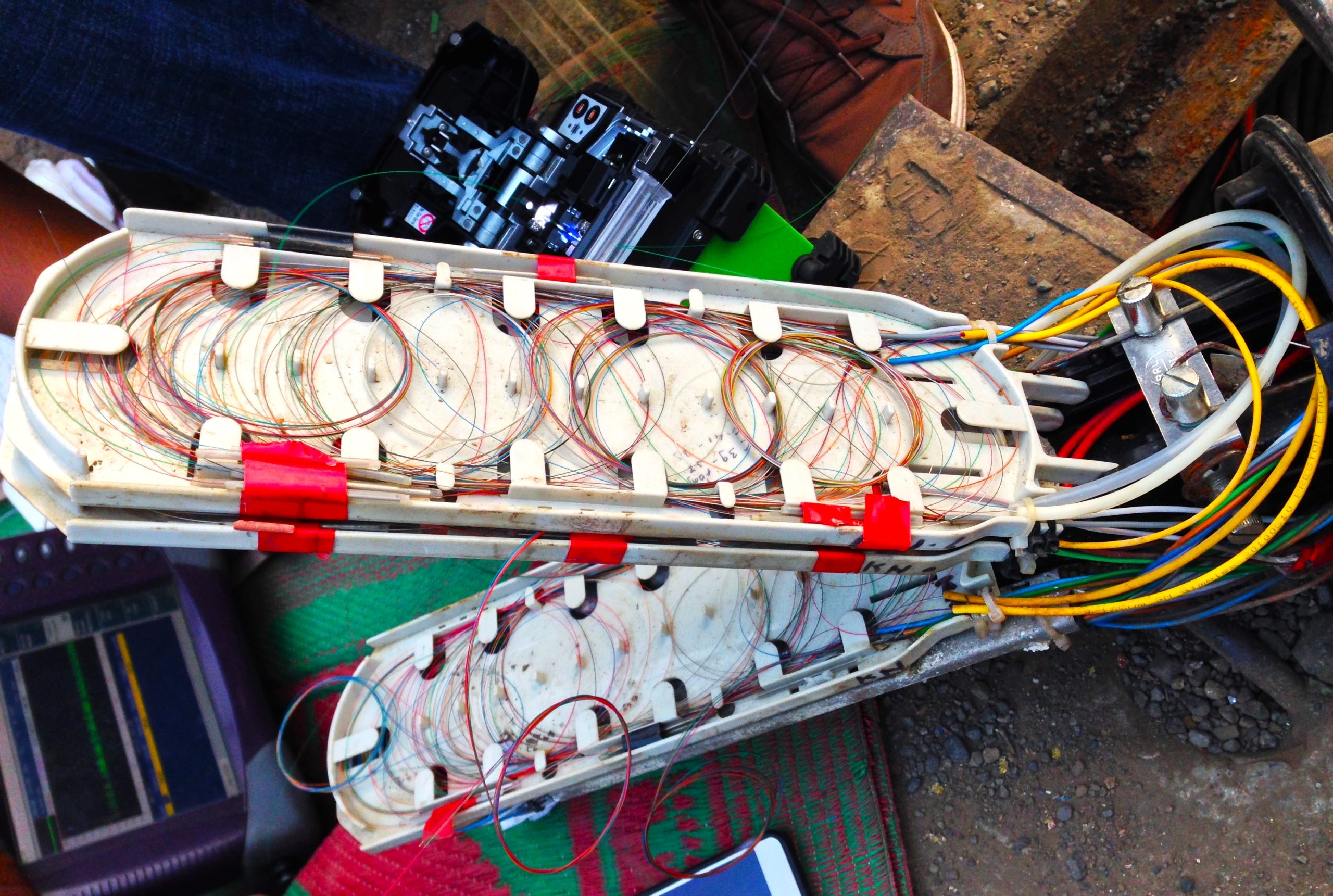The Internet is a very important part of our life. We cannot imagine today surviving without the internet, because all our data is fed to us by means of the internet only. Many of us think that internet service is provided to us by wireless. This theory is absolutely wrong. In fact, you will be astonished to know that the internet is provided to us by means of optical fibre cables. Our world is connected by the internet through these cables, which are laid under the sea. In this post, we will show optical fibre cables work underwater.
What is Optical Fibre?
Optical fibre is a cable medium which is used to transmit data in the form of light. It comes under the category of cables like coaxial cables, twisted pair cables, and shielded cables.

The main difference between the optical fibre and remaining cables is that in only this type of cable, data is transmitted in the form of light. In other cables, data is normally transmitted in electrical form.
This main advantage of light theory makes it the most efficient, reliable and fastest mode of transport in the cables category. Let us first understand how light is used to transmit data.
Refer to the below image for understanding. When light is passed through a medium like glass, it starts to bend. This bending is calculated by a parameter called the refraction index.

The refraction index of glass is higher than the air. Light tends to pass over a lighter refraction index. Due to this, it tilts towards the air; and this bending is thus caused by the difference in refraction index.
Now, by doping means, we can increase the refraction index of glass. Due to this, the light will bend more towards the surface and after some point of time, if doping is still increased, then the light will start to reflect internally only (which means, it will bend on just touching the surface). This means that the light is now moving internally in the glass material.
This theory works in optical fibre cables. Due to this light confinement inside the material, you can now make the light just travel inside the cable and reach its destination. This means total internal reflection has been achieved, by modifying the refraction index of the cable material.
Now, we all know that data is interpreted in binary form in two ways – 0 for off and 1 for on. As optical fibre uses light as a medium, a device is used before the cable to convert data form into light form.
When data bit 0 is received, no light pulse is generated; and when data bit 1 is received, a light pulse is generated. These light pulses then travel through the optical fibre cable. And as the speed of light is very fast, data is transmitted in a very rapid way.
Underwater Fibre Optic Cable
Now, let us come back to our topic. As we saw optical fibre cables are very fast in data transmission, it is widely used for internet service. As the countries are divided by ocean and seas, and it is impossible to communicate such a large amount of data through wireless means (wireless communication cannot transfer data at very large distances), the only option left is to unite the countries by sea. This is possible by laying fibre optics cables under the sea.
The cables travel under the sea and meet only select points in the country; from where the local service providers distribute data in that respective country. Even they use fibre optics cables locally for larger distances inside the country.
Cables are laid in the seabed. An optical fibre cable is first covered in silicon gel, and then sheathed in various layers of copper, plastic, nylon and steel wiring, to make it possible to travel under the sea with full protection. This allows them to keep themselves safe from fish, ship anchors, and unnatural climatic changes.
Cables contain a number of repeaters, which boost the signal along the length of the cable roughly every 100km. At each end, the cables reach land within a cable landing station, from where the data is routed to its final location.
After choosing the desired route, specialist ships begin work of laying the cable, which is dropped to the ocean floor. These ships hold giant spools of cables before slowly and precisely unfurling and laying them on the ocean floor.
As the cables begin to approach land, cables are often buried in trenches created by subsea ploughs in order to protect them from damage. One must be wondering that if cables are open, then large fish must have bitten them accidentally. But, it is a very rare case, and it does not happen.
In this way, we understand the general concept of an underwater fibre optic cable.
If you liked this article, then please subscribe to our YouTube Channel for Instrumentation, Electrical, PLC, and SCADA video tutorials.
You can also follow us on Facebook and Twitter to receive daily updates.
Read Next:
- What is OTDR?
- Testing of Fiber Optic
- Single-mode Optical Fiber
- Construction of Fiber Optic Cable
- Fiber Optics Objective Questions